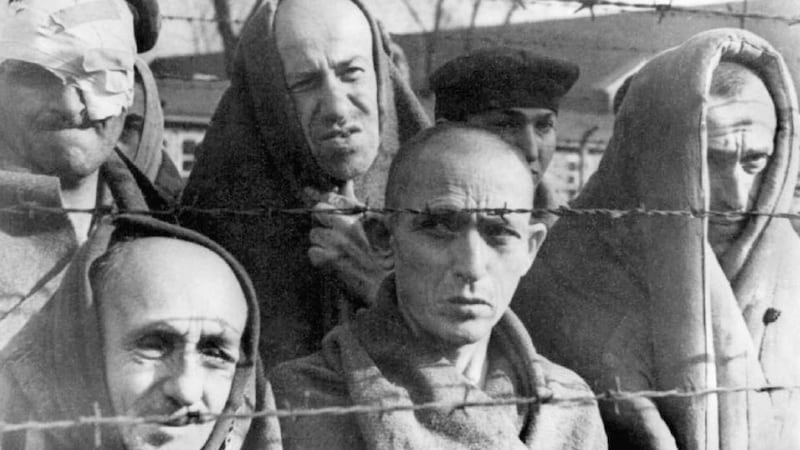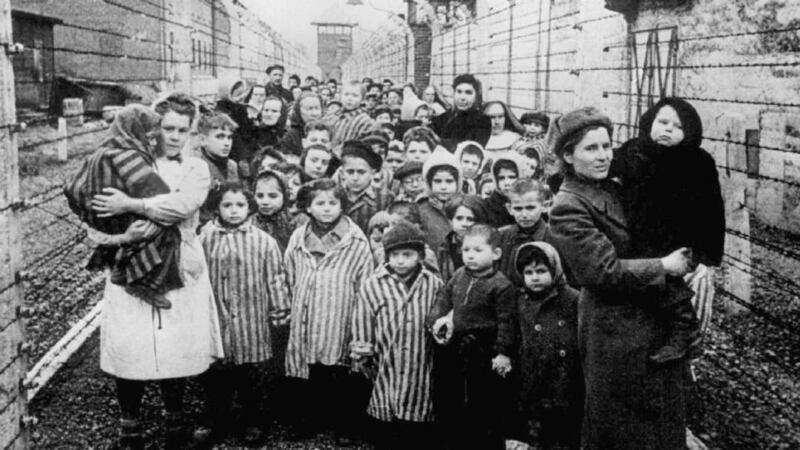The Diary of Anne Frank (1947), Anne Frank
Published by her father after the war, Anne Frank’s diary gives an account of her family’s hidden life in Nazi occupied Netherlands. A modern classic and an important work in shaping the post-war narrative of the Holocaust, Frank received the diary for her thirteenth birthday in 1942, shortly before the family went into hiding in the closed-off rooms of the building that housed her father’s company in Amsterdam. Two years later, the family were betrayed. Anne died in Bergen-Belsen from typhus in early March, a few weeks before the prisoners were liberated by British troops in April 1945. The diary takes the form of letters to imaginary friends, whose names are thought to have come from books by the Dutch children’s author Cissy can Marxveldt.
Alone in Berlin (1947), Hans Fallada


One of the first anti-Nazi novels to be published by a German author after the war, Alone in Berlin is based on the true story of an ordinary working class couple with extraordinary courage. Joining the German resistance movement, Otto and Elise Hampel took it upon themselves to fight the Nazis by depositing hundreds of postcards in various locations around Berlin that urged people to overthrow the regime. Their heroic acts led to their execution in Plötzensee Prison in 1943. Fallada, who was chronically ill and suffering from morphine addiction, was given their Gestappo file by the poet Johannes Becher. Initially reluctant, Fallada was won over by the Hampel's story. He wrote the novel in 24 days and died a few months later, before the book was published.
If This is a Man (1947), Primo Levi
The human capacity for atrocity, and the human ability to deal with it, is at the centre of Levi's stunning testament to the evils men do to each other. An Italian chemist, Levi was arrested for his membership of a partisan group in northern Italy. He was sent to Auschwitz in 1943 where he worked in the laboratory of the Buna factory at Monowitz. In this book, and in much of his subsequent fiction and non-fiction, Levi examines the degree to which it was possible to remain human under the conditions at the concentration camps. Beautifully written, with the scientist's eye for observation and insight, If This is a Man questions what it means to be alive, before, during and after the Holocaust. It is witness literature at its most compelling: "No one must leave here and so carry to the world, together with the sign impressed on his skin, the evil tidings of what man's presumption made of man in Auschwitz."
The Origins of Totalitarianism (1951), Hannah Arendt
Arendt was a German-Jewish political theorist who fled Europe for America after being detained in Camp Gurs, an internment camp near Pau in France for non-French Jews. In addition to coining the phrase "the banality of evil", the sub-heading of her controversial book on the Adolf Eichmann trial, Arendt wrote a number of other books on the nature of power. The Origins of Totalitarianism, which analyses Nazism, Stalinism and the major dictatorial regimes of the 20th century, has ranked highly on international literature lists. Others have criticised the book, however, with an article in the Times Literary Supplement in 2009 calling Arendt's sources into question.
Night (1956), Elie Wiesel
“Never shall I forget that night, the first night in camp, which has turned my life into one long night, seven times cursed and seven times sealed.” Wiesel and his family were transferred to Auschwitz after the Nazi invasion of Hungary and Romania in 1944. As the Allies were preparing to liberate Europe, hundreds of thousands of Jewish-Romanians were transferred by train to the death camps. Losing his mother and youngest sister to the gas chambers, Wiesel found himself in Auschwitz, trying to keep himself and his mentally-deteriorating father alive. The first book in a trilogy, this short, sparse novel gives a memorable account of the inhumanity the author witnessed at the camps. Transferred to Buchenwald, where his father died shortly before liberation, Wiesel emigrated to America after the war and has been awarded the Nobel Prize for Peace for his political activism.
A Scrap of Lives and Other Stories (1987), Ana Fink
Occupied Poland is the backdrop for most of the stories in Fink’s collection, which looks at the destruction wreaked by the Holocaust on village and family life. Contrasting the everyday and natural worlds with the horrors of genocide, Fink tell the stories of ordinary people forced to make unthinkable choices. Born in Poland, the author immigrated to Israel in 1957. Her own experiences, including an escape from the Zbara ghetto in 1941 with forged Aryan papers, are fictionalised in the collection, winner of the Anne Frank Award a PEN award for translation.
Maus (1991), Art Spiegelman
The American cartoonist’s graphic novel is based on a series of interviews with his father, a Holocaust survivor. Using animals to represent different races - Jewish people are mice, the Germans are cats, Polish non-Jews are depicted as pigs - Spiegelman tells the family’s story through a blend of genres. Memoir, biography, fiction and some seminal illustration work combine to form two narratives, one in seventies New York where the interviews take place, the latter leading up to the second World War. The cartoonist’s mother, Anja Spiegelman, was a Holocaust survivor who killed herself when her son was twenty. Her written testimony of Auschwitz was destroyed by her husband, a subject discussed by the characters in the book.
The Reader (1995), Bernhard Schlink
Recovering from hepatitis, teenager Michael Berg is off school and left to his own devices in late fifties Berlin. A chance meeting with an older woman, the inscrutable Hannah, prompts an intense, strange relationship centred on reading and sex. Years later, studying law at college, Michael comes to realise the reasons for Hannah’s strangeness. Filled with revulsion and pity, he struggles with personal guilt, which Schlink masterfully uses as a backdrop to explore the guilt of a nation. The questions hanging over “the second generation”, the children of those associated with or tainted by the Nazi regime, are at the centre of the book: “What should our second generation have done, what should it do with the knowledge of the horrors of the extermination of the Jews? We should not believe we can comprehend the incomprehensible, we may not compare the incomparable, we may not inquire because to inquire is to make the horrors an object of discussion, even if the horrors themselves are not questioned, instead of accepting them as something in the face of which we can only fall silent in revulsion, shame and guilt. Should we only fall silent in revulsion, shame and guilt?”
On the Natural History of Destruction (1999), WG Sebald
The son of a Nazi soldier, WG Sebald chose to write about the suffering of the Jewish people under the regime from a number of unusual perspectives. His novel Austerlitz (2001) told the story of a Kindertransport refugee from Czechoslovakia. The Emigrants (1992), with its uncaptioned black and white images, looks at the lives of German-Jews dispersed by war. On the Natural History of Destruction is a book of essays on writers and literature through which Sebald explores the devastation of the second World War and his country's silence after it was over. In a review for the Guardian, John Banville called the book "a fierce protest at the mendacity and moral evasiveness of our time."
The Collini Case (2011), Ferdinand von Schirach
Vergangenheitsbewältigung is the German word for the process of dealing with the past. Much like Schlink's book, The Collini Case focuses on a modern-day trial that has roots in Nazi atrocities. The difference with this book is the author's personal connection with the perpetrators. Von Schirach's grandfather, Baldur von Schirach, was the head of Hitler Youth. The novel centres on the trial of an Italian charged with the vicious murder of an old man. The victim, Hans Meyer, was a paternal figure to the lawyer protagonist Caspar Leinen, who takes on the case ignorant of the crimes of the past.

















